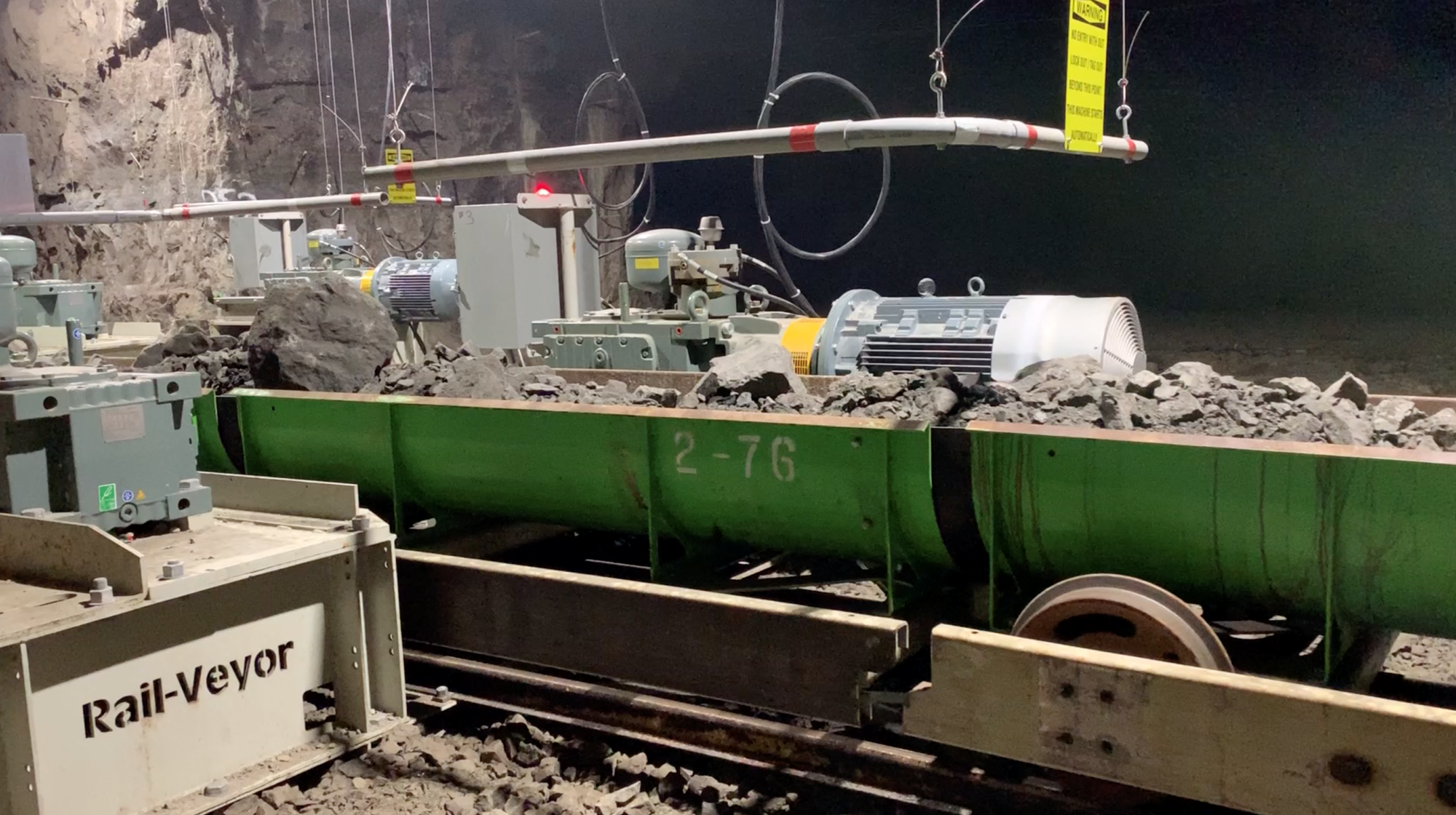In a recent IM interview with Alistair Ross, President & Chief Executive Officer of Rockcliff Metals Corp spoke in detail about the company’s underground haulage plans and considerations – specifically why he feels that the Rail-Veyor remote controlled, electrically powered light-rail haulage solution is potentially the right choice for the underground mines that to be developed at the company’s 100%-owned polymetallic VMS Tower and Rail (Cu, Au, Ag, Zn) deposits located in the Flin Flon-Snow Lake region of Manitoba.
He homed in on the core driver as follows: “Conventional rail would not work on an underground ramp of any significant gradient – and the steeper we can drive the ramp the less excavation required, thus a shorter time to get to ore, and lower costs. Rail-Veyor can operate at steeper gradients than even we require. A conventional rubber tyred fleet of trucks may offer a lower capital cost for equipment, but comes with some serious other costs that are not always considered. Every tonne of rock excavated to get to the ore is a capital cost – and to run trucks in a ramp requires significant size openings, that are then exacerbated if they are diesel, by the need to carry ventilation required for exhausting diesel fumes to keep the workers safe and healthy. We anticipate saving approximately 1.5 m in height on our ramp and nearly a metre in width due to using Rail-Veyor. This will reduce the cost of every metre advanced toward the orebody, and speed up time to get to the orebody.”
The other big factor for Ross is that the Rail-Veyor is electric driven, and because it is doing the heavy lift out of the mine, then Rockcliff is able to make the rest of the fleet battery electric or electric driven as well. He also points out that battery electric trucks are not yet cost effective for ramp work without some form of trolley assist system that is expensive. “This elimination of diesel mobile equipment from the mine will reduce the cost of ventilation by approximately one third – and given that ventilation is the major energy driver in underground mining, this is very significant. And of course, for every cubic metre of air that does not get pushed into the mine, there is a further significant saving in air that did not require heating before going underground, another significant cost for mines in operating in Northern Manitoba.”
The company is also examining of the use of Rail-Veyor as it can take haulage right to the orebody, unlike a fixed shaft that tends to get further from orebodies over time as the natural dip of orebdies is rarely vertical, so it represents a possible means to eliminate or reduce another high hazard activity – that of raising. “If we can carry our lower ventilation requirements with us in the ramp for life of mine purposes, and if we can negate the use of ore or waste passes for getting the ore to the muck circuit, because our muck circuit is always where we need it, it may be possible to never put a raise in.”











